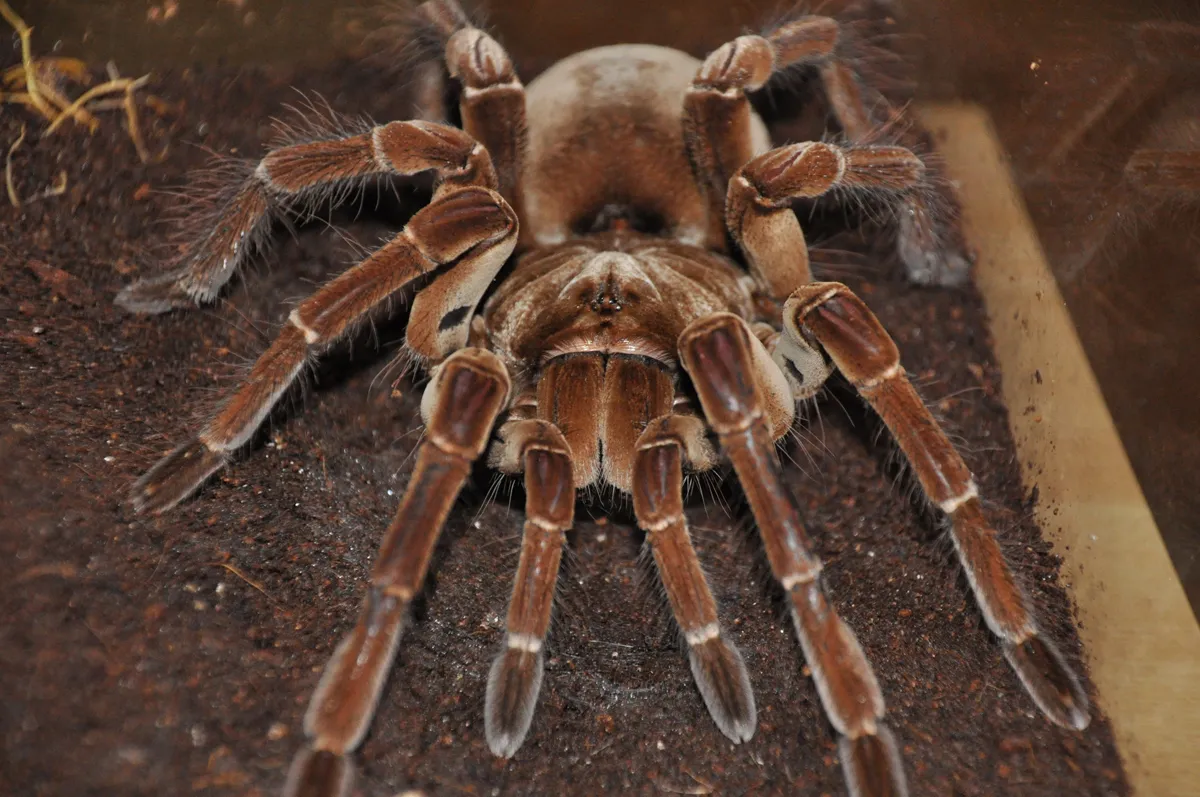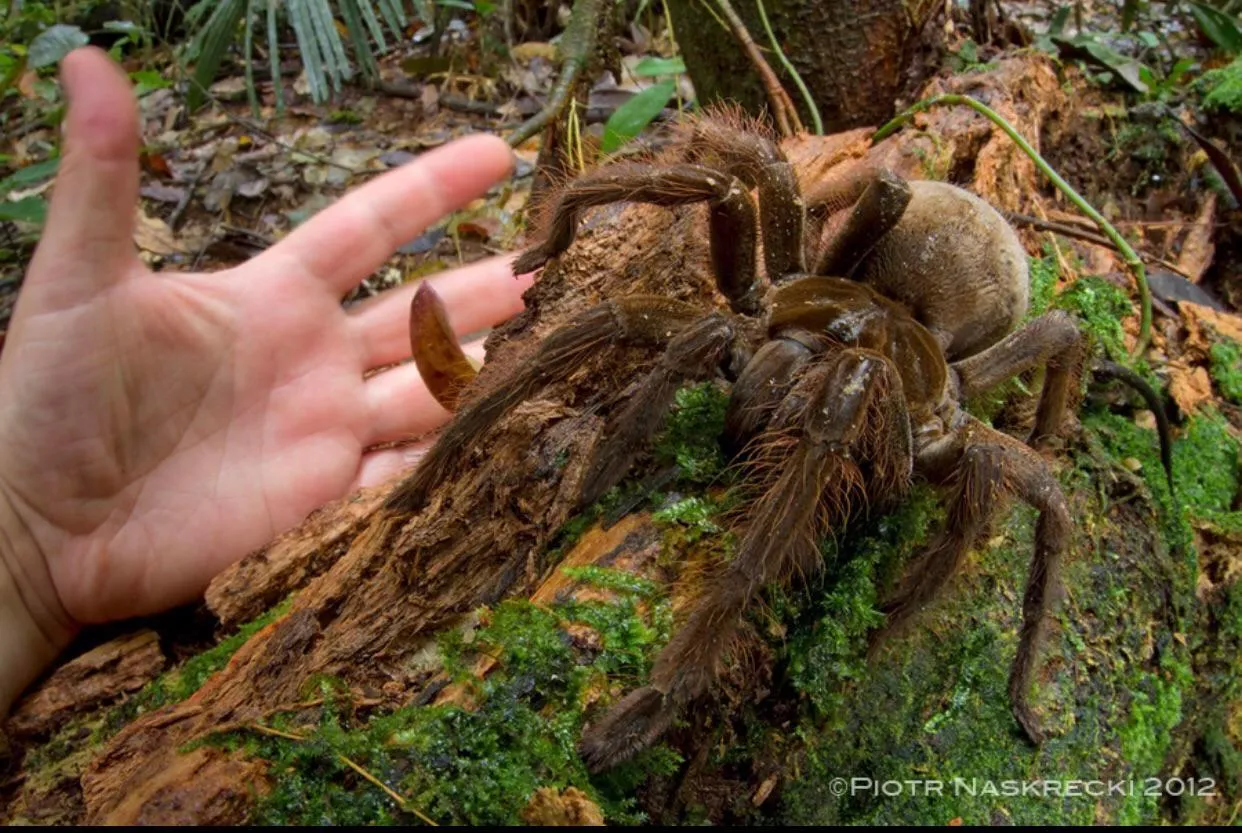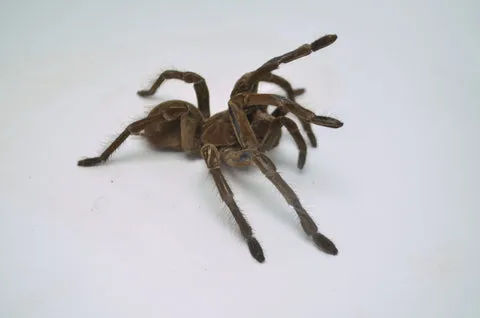What is a Goliath Birdeater Tarantula?
The Goliath Birdeater tarantula (Theraphosa blondi) is the world’s largest spider, a title it holds with impressive authority. Native to the rainforests of northern South America, this arachnid is a fascinating creature that captures the imagination of both arachnophiles and the generally curious. Its imposing size, unique hunting strategies, and intriguing behaviors set it apart from other spiders. This article explores top 5 facts about the Goliath Birdeater tarantula, providing a comprehensive overview of this impressive species. This article dives into its physical characteristics, habitat, diet, behavior, and conservation status, offering a complete insight into the life of this amazing tarantula.
Size and Appearance
The Goliath Birdeater is a giant among spiders, with a leg span that can reach up to 12 inches (30 cm). Their body length alone can measure up to 4.7 inches (12 cm). They are heavily built and covered in brown to dark-brown hairs that give them a fuzzy appearance. Their formidable size makes them a spectacle to behold. These tarantulas also possess large fangs (chelicerae) that they use to inject venom into their prey. Despite their intimidating look, their size is their most striking feature, making them one of the most recognizable spiders on Earth. This impressive size is a key adaptation that allows them to take down a variety of prey, from insects to small vertebrates.
Habitat and Distribution

The Goliath Birdeater is endemic to the rainforests of northern South America. They are typically found in the humid, swampy areas of countries like Brazil, Venezuela, Guyana, Suriname, and French Guiana. Their habitat preference highlights their need for a specific set of environmental conditions to thrive. The warm, moist climate and abundant vegetation provide the perfect environment for them to hunt, burrow, and thrive.
Where Do They Live?
Goliath Birdeater tarantulas are ground-dwelling spiders. They live in burrows that they construct in the forest floor. These burrows can be quite deep and are often lined with silk to provide a secure and comfortable shelter. They prefer areas with loose, loamy soil that allows for easy digging. These burrows also offer protection from the elements and potential predators, making them an ideal habitat for these large spiders.
Their native region
These tarantulas are native to the rainforests of northern South America, where they play a vital role in their ecosystems. They are found in countries like Brazil, Venezuela, Guyana, Suriname, and French Guiana. The region’s consistent warmth, high humidity, and dense vegetation provide the necessary conditions for these spiders to flourish. The specific environmental conditions are critical to their survival and reproduction.
Diet and Feeding Habits

Despite their name, Goliath Birdeaters rarely eat birds. Their diet primarily consists of insects, but they are opportunistic hunters and will also consume small vertebrates. Their diet is a key part of their life. They will eat anything they can overpower, from insects to small rodents. Their hunting abilities make them an important part of their ecosystem.
What do they eat?
The Goliath Birdeater’s diet is quite varied. While their name might suggest otherwise, birds are not a regular part of their diet. Their menu includes a variety of insects, such as beetles, crickets, and grasshoppers, as well as small lizards, rodents, and even snakes. Their diet varies depending on what is available in their habitat, showing their adaptability as hunters. The tarantula’s ability to consume such a diverse range of prey highlights its adaptability.
How they hunt?
Goliath Birdeaters are ambush predators. They wait patiently in or near their burrows for prey to come within striking distance. When an opportunity arises, they lunge forward with incredible speed, using their large fangs to inject venom. The venom immobilizes the prey, and the spider then uses its chelicerae to crush the meal before beginning to feed. The efficient hunting technique is a key part of the survival of the Goliath Birdeater.
Behavior and Temperament

These tarantulas are generally not aggressive but can be defensive if provoked. They are often reclusive, preferring to stay in their burrows. Despite their size, they are generally docile. They will try to avoid confrontation. Their behavior is a mix of caution and defensiveness, which contributes to their survival in the wild. They are not typically confrontational, but they are fully capable of defending themselves if they feel threatened.
Defensive Mechanisms
When threatened, the Goliath Birdeater has several defensive mechanisms. They can flick urticating hairs off their abdomen, which cause severe irritation to skin and eyes. They also possess large fangs and can deliver a painful bite if they feel cornered. Their defensive strategies are vital for protection against predators. These defensive traits help them survive in their natural environment.
Lifespan and Reproduction
Goliath Birdeaters have a relatively long lifespan compared to many other spiders. Females can live for up to 25 years in the wild, while males typically have a shorter lifespan, often only living for a few years after reaching maturity. The females’ longevity means they can reproduce multiple times. The longevity of the species shows how well they have adapted to their environment. These tarantulas have a complex life cycle that includes molting, mating, and egg laying. This cycle is essential for the survival of the species.
Reproduction

Mating in Goliath Birdeaters involves a complex courtship ritual where the male uses spurs on his legs to hold the female’s fangs away from him. After mating, the female lays eggs in a silken egg sac, which she guards carefully until the spiderlings hatch. The female protects the eggs and young spiderlings, which demonstrates their parental care. The process of reproduction is essential for the continuation of the species. Spiderlings go through several molts as they grow, eventually reaching maturity.
Conservation Status
The Goliath Birdeater is not currently listed as endangered, but they face threats from habitat loss due to deforestation and the pet trade. Their survival depends on the preservation of their natural habitats and responsible practices. Conservation efforts are crucial to maintain their population. Habitat protection and sustainable practices are essential to ensure their long-term survival. Raising awareness and promoting responsible pet ownership can also contribute to their conservation.
